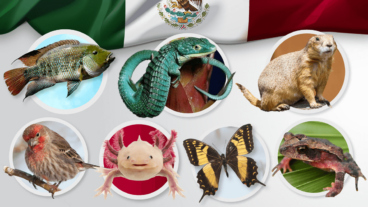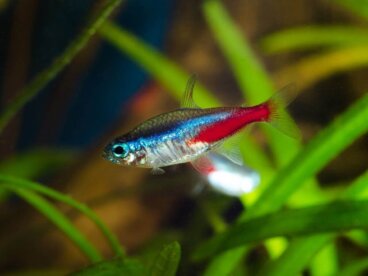4 Types of Chihuahuas (And Their Characteristics)


Written and verified by the biologist Cesar Paul Gonzalez Gonzalez
The Chihuahua is one of the smallest dog breeds in existence. It’s originally from Mexico and is characterized by its nervous, courageous, and fearless character. It isn’t an easy dog to train, but its size has made it one of the most popular pets. We’ll take a look at 4 types of chihuahuas in this article.
The breeding and production processes of dogs have led to the creation of several types of Chihuahuas. Each one of them has particular characteristics, but they keep the cute and distinctive aspect of the breed. Continue reading to get to know all the variants that exist of this curious dog.
Chihuahua characteristics
The Chihuahua is a dog that doesn’t usually grow too much, although its height varies a lot even within the renowned canine competitions. In fact, the institution that sets breed standards, called the Kennel Club, doesn’t propose restrictions on size, but rather on weight.
These dogs have a rounded skull with small, erect ears, as well as a body that’s longer than wide and an erect tail. They have large, expressive eyes that emphasize their face, while their muzzle can be elongated or reduced. They have an approximate size between 15 and 38 centimeters (6 to 15 inches) in height, always weighing less than 3 kilograms (6.6 lbs).
This dog tends to show a very nervous and unconfident personality, so it behaves quite aggressively in certain situations. It’s affectionate with its owners and protects them at all costs, but this situation can also lead to separation anxiety problems. In order to have a healthy Chihuahua, it’s necessary to train them to learn to trust (socialize) and avoid so many nervous situations.
Types of Chihuahuas
The only variety of this breed recognized by cynological organizations such as the Kennel Club is the so-called “apple-head”. This includes both long-haired and short-haired dogs. However, other types of Chihuahua dogs carry small differences in their characteristics that make them look amazing.
1. Apple-head
Chihuahuas that have a small, rather circular head are called apple-head Chihuahuas. Their forehead is wide and stands out, and their muzzle is smaller and helps to accentuate the rounded shape of their skull. This aspect resembles very much its cephalic composition to the curvature of an apple, which is why it receives its name.
2. Deer head
The variant called deer head is characterized by a more elongated and less rounded muzzle than its counterpart. Also, the erect ears are the feature that stands out the most in these Chihuahuas, so that their face resembles somewhat that of a deer. It’s usually the most popular type as a pet, although international cynological organizations don’t recognize it as a “pure breed”.
3. Hairless Chihuahua
Hairless Chihuahuas have been bred as an efficient alternative for people with allergies. Although their name implies that they’re completely hairless, the fact of the matter is that they sometimes have a fine coat of hair. The selective crosses that were needed to create them have caused them to have some dental problems.
These dogs are a very rare variant and aren’t very well known at present.
4. Miniature or teacup
This type of Chihuahua is, at most, 22 centimeters (nearly 8 inches) tall and weighs less than 2 kilograms (4.4 lbs). Although these dogs are seen as a variety of the breed, very small dogs in this breed are called miniature. In fact, any of the above varieties can have dogs of this size.
Some media argue that selective breeding of miniature specimens is unethical, as they tend to have considerably more health problems than the normal variants.
Chihuahua coat variations
As mentioned above, Chihuahuas can have two coat types: long or short. All variants (with the exception of the hairless Chihuahua) are capable of having either type. The characteristics of each are described below:
- Long coat: With this type of coat the dog sports a long, bulky, fine, silky coat that covers its entire body. It’s more evident on the neck and at the base of the ears, so it’s possible to confuse it with a Pomeranian.
- Shorthair: This is the most common coat of the Chihuahua. It’s characterized by being very close to the body, which highlights the slender appearance of the breed.
Essential care
Chihuahuas require dedication and care. They are one of the most susceptible breeds to developing behavioral disorders, so training should be one of the fundamental parts of their daily life. In addition, they need the attention of their owners and don’t tolerate abandonment. Because of this, avoid leaving them alone or locked up for long periods of time.
Depending on the variety you choose, you may have to take special care of their coat. This means establishing schedules for brushing at least 2 or 3 times a week. If you choose to adopt one of the hairless varieties, remember that they’re a little more susceptible to the cold and you should keep their skin well moisturized.

All types of Chihuahuas are excellent pets suitable for living in small spaces such as apartments. However, they also require essential care to prevent their health from being compromised. Rest assured that, with a good training regimen and the necessary attention, this dog will become the best companion you could have.
The Chihuahua is one of the smallest dog breeds in existence. It’s originally from Mexico and is characterized by its nervous, courageous, and fearless character. It isn’t an easy dog to train, but its size has made it one of the most popular pets. We’ll take a look at 4 types of chihuahuas in this article.
The breeding and production processes of dogs have led to the creation of several types of Chihuahuas. Each one of them has particular characteristics, but they keep the cute and distinctive aspect of the breed. Continue reading to get to know all the variants that exist of this curious dog.
Chihuahua characteristics
The Chihuahua is a dog that doesn’t usually grow too much, although its height varies a lot even within the renowned canine competitions. In fact, the institution that sets breed standards, called the Kennel Club, doesn’t propose restrictions on size, but rather on weight.
These dogs have a rounded skull with small, erect ears, as well as a body that’s longer than wide and an erect tail. They have large, expressive eyes that emphasize their face, while their muzzle can be elongated or reduced. They have an approximate size between 15 and 38 centimeters (6 to 15 inches) in height, always weighing less than 3 kilograms (6.6 lbs).
This dog tends to show a very nervous and unconfident personality, so it behaves quite aggressively in certain situations. It’s affectionate with its owners and protects them at all costs, but this situation can also lead to separation anxiety problems. In order to have a healthy Chihuahua, it’s necessary to train them to learn to trust (socialize) and avoid so many nervous situations.
Types of Chihuahuas
The only variety of this breed recognized by cynological organizations such as the Kennel Club is the so-called “apple-head”. This includes both long-haired and short-haired dogs. However, other types of Chihuahua dogs carry small differences in their characteristics that make them look amazing.
1. Apple-head
Chihuahuas that have a small, rather circular head are called apple-head Chihuahuas. Their forehead is wide and stands out, and their muzzle is smaller and helps to accentuate the rounded shape of their skull. This aspect resembles very much its cephalic composition to the curvature of an apple, which is why it receives its name.
2. Deer head
The variant called deer head is characterized by a more elongated and less rounded muzzle than its counterpart. Also, the erect ears are the feature that stands out the most in these Chihuahuas, so that their face resembles somewhat that of a deer. It’s usually the most popular type as a pet, although international cynological organizations don’t recognize it as a “pure breed”.
3. Hairless Chihuahua
Hairless Chihuahuas have been bred as an efficient alternative for people with allergies. Although their name implies that they’re completely hairless, the fact of the matter is that they sometimes have a fine coat of hair. The selective crosses that were needed to create them have caused them to have some dental problems.
These dogs are a very rare variant and aren’t very well known at present.
4. Miniature or teacup
This type of Chihuahua is, at most, 22 centimeters (nearly 8 inches) tall and weighs less than 2 kilograms (4.4 lbs). Although these dogs are seen as a variety of the breed, very small dogs in this breed are called miniature. In fact, any of the above varieties can have dogs of this size.
Some media argue that selective breeding of miniature specimens is unethical, as they tend to have considerably more health problems than the normal variants.
Chihuahua coat variations
As mentioned above, Chihuahuas can have two coat types: long or short. All variants (with the exception of the hairless Chihuahua) are capable of having either type. The characteristics of each are described below:
- Long coat: With this type of coat the dog sports a long, bulky, fine, silky coat that covers its entire body. It’s more evident on the neck and at the base of the ears, so it’s possible to confuse it with a Pomeranian.
- Shorthair: This is the most common coat of the Chihuahua. It’s characterized by being very close to the body, which highlights the slender appearance of the breed.
Essential care
Chihuahuas require dedication and care. They are one of the most susceptible breeds to developing behavioral disorders, so training should be one of the fundamental parts of their daily life. In addition, they need the attention of their owners and don’t tolerate abandonment. Because of this, avoid leaving them alone or locked up for long periods of time.
Depending on the variety you choose, you may have to take special care of their coat. This means establishing schedules for brushing at least 2 or 3 times a week. If you choose to adopt one of the hairless varieties, remember that they’re a little more susceptible to the cold and you should keep their skin well moisturized.

All types of Chihuahuas are excellent pets suitable for living in small spaces such as apartments. However, they also require essential care to prevent their health from being compromised. Rest assured that, with a good training regimen and the necessary attention, this dog will become the best companion you could have.
All cited sources were thoroughly reviewed by our team to ensure their quality, reliability, currency, and validity. The bibliography of this article was considered reliable and of academic or scientific accuracy.
- Fédération Cynologique Internationale (sf). Chihuahua. Recuperado el 11 de enero de 2022, disponible en: https://www.akc.org/dog-breeds/chihuahua/
- Fédération Cynologique Internationale. (2008). Official Standard of the Chihuahua. Recuperado el 11 de enero de 2022, disponible en: http://images.akc.org/pdf/breeds/standards/Chihuahua.pdf
- Pet Medical Center (2013) Your Chihuahua. Caring for Your Faithful Companion. Recuperado el 11 de enero de 2022, disponible en: https://www.pet-medcenter.com/storage/app/media/PDF/Dog_pdf/Chihuahua.pdf
This text is provided for informational purposes only and does not replace consultation with a professional. If in doubt, consult your specialist.








